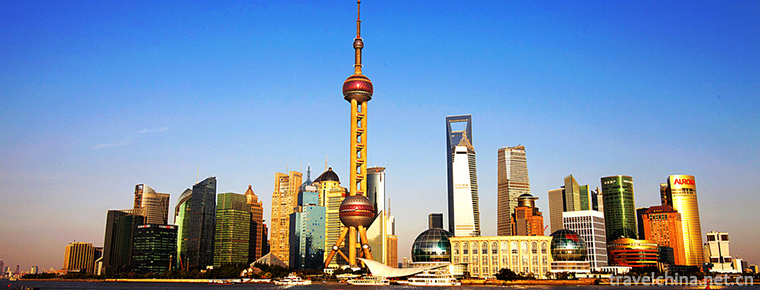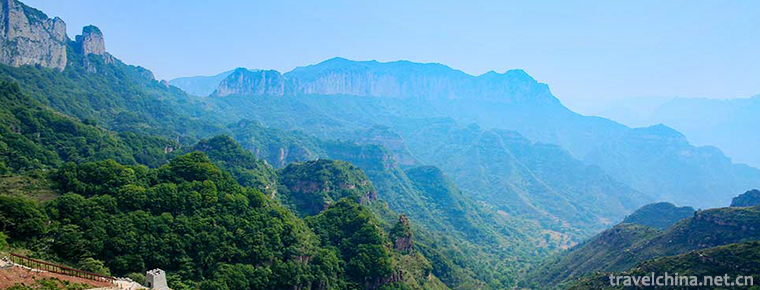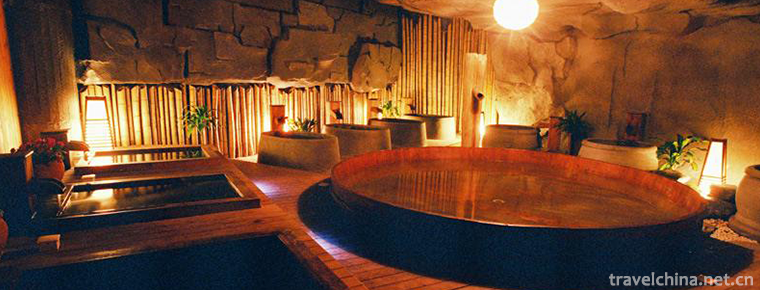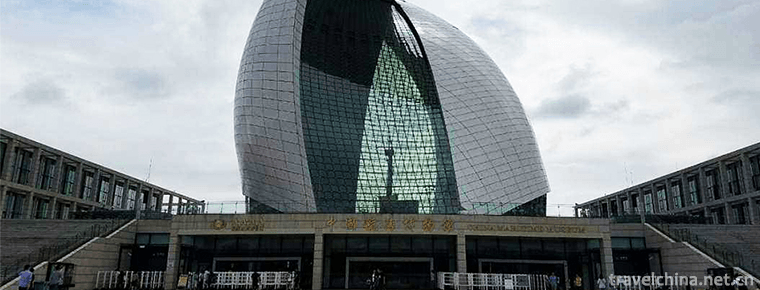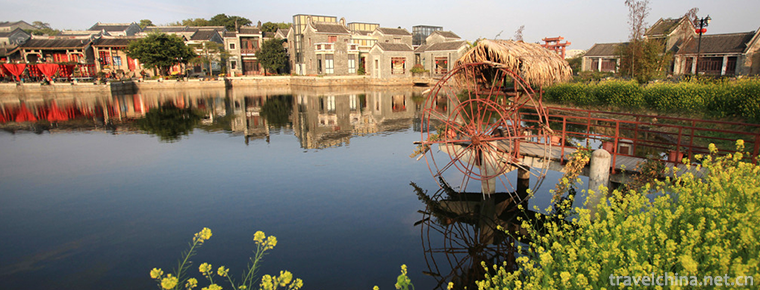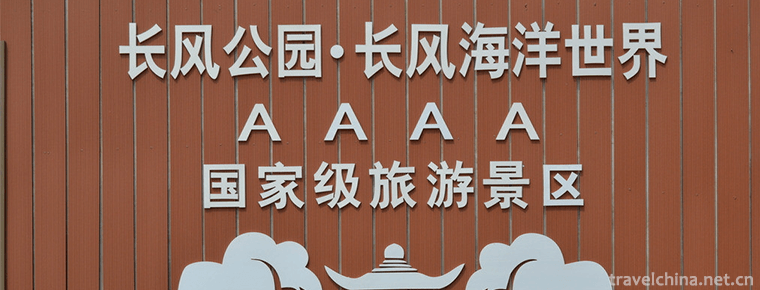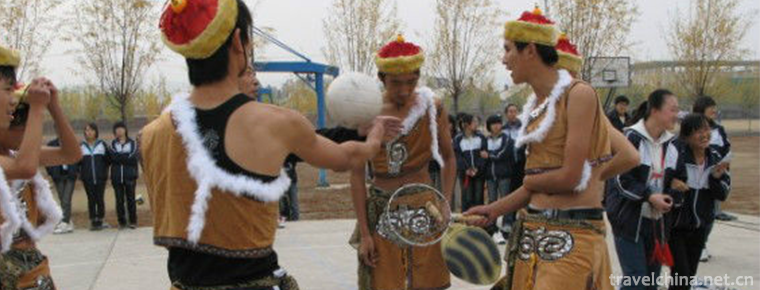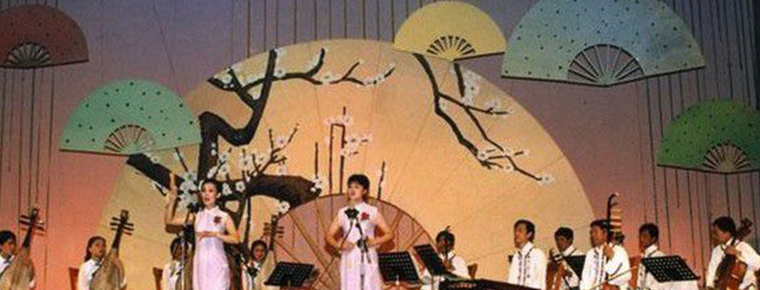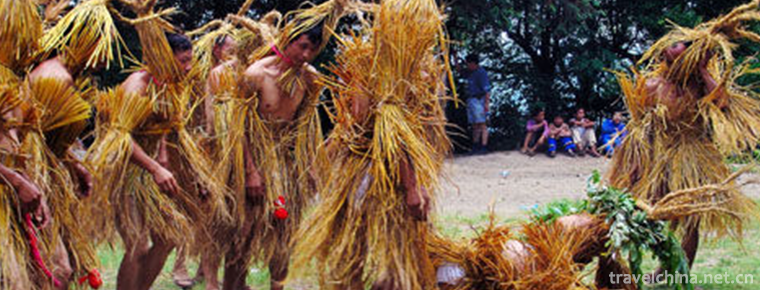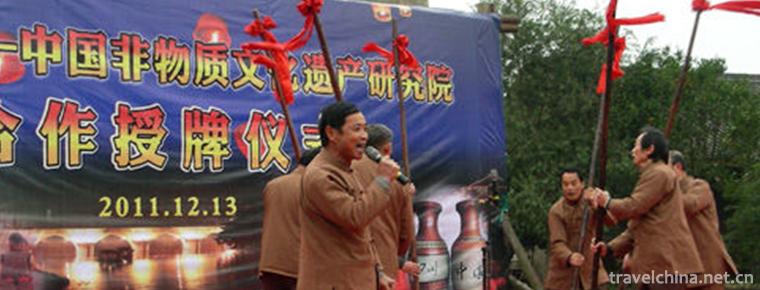Cai Lun Zhuhai
Cai Lunzhuhai is located in Huangshi Town and Dayi Town, Leiyang City, a famous historical and cultural city in central and southern China. It covers an area of 100 square kilometers and has a central scenic spot of 66 square kilometers. It is a complex scenic spot integrating sightseeing, leisure, exploration and treasure hunting. It is now a national AAAA-level scenic spot, China's most attractive ecological scenic spot, National Water Conservancy Scenic Spot and provincial-level scenic spot. Sheng District, Provincial Forest Park and Provincial Mountain Bike Training Base. Preparing for the construction of national 5A tourist scenic spots, National Scenic spots, national forest parks and national mine parks. Cai Lun's bamboo sea covers a vast area of 160,000 mu, which is the largest bamboo sea in China. It has the reputation of "Asian Bamboo Sea" and "Natural Oxygen Bar". Beijing-Zhuhai Expressway, Beijing-Guangzhou High-speed Railway and so on are passing by, 107 National Highway, 320 Provincial Highway and Beijing-Guangzhou Railway are interwoven into a network.
Introduction
Cai Lun Zhuhai Scenic Spot is located in Leiyang City, a famous historical and cultural city with a thousand-year history. It is 38 kilometers away from Leiyang City and 12 kilometers away from the fair crossing of Beijing-Hong Kong-Macao Expressway. Cai Lunzhuhai is located in Huangshi Town and Dayi Township of Leiyang City. It is located in the south of Hunan Province and the upstream of Leishui Scenic Belt. It is a scenic spot through highways, waterways and railways. Located in Beijing-Zhuhai Expressway, Beijing-Guangzhou Railway, Beijing-Port High-speed Railway, Yonglei Railway and other parts of the triangle center. Cai Lunzhu Sea Scenic Spot covers an area of 100 square kilometers, with a central area of 66 square kilometers. It integrates sightseeing, leisure, exploration and treasure hunting. It is a national AAAA-level scenic spot, China's most attractive eco-tourism scenic spot , National Water Conservancy Scenic Spot , Hunan Province's key tourism construction project "251" project, provincial scenic spot, provincial level. Forest parks and provincial Mountain Bike Training bases.
Cai Lun Zhuhai Scenic Spot is located in the upper reaches of Leishui Scenic Belt, from Huangnigang Town in the north to Dahetan Town in Huangshi Town, from Dayi Town in the east to Fair Town in the west, involving 18 natural villages in Huangshi Town, Dayi Town and Nanyang Town. The bamboo sea covers more than 200 hilltops of different sizes, fluctuates according to the mountain situation, is lush and lush with an area of 160,000 mu. It is the largest continuous bamboo sea in China and is known as the "Asian Bamboo Sea". Among them, there are more than 20 species of bamboo, which is the only scenic spot with large bamboo sea in six provinces of central and southern China. According to expert monitoring, the bamboo sea contains more than 15,000 negative ions per cubic meter, which is the largest natural oxygen bar in China. The Leishui in the scenic area passes through forests and around bamboo, forming a unique scenic spot of Shuizhu. Shangbao Hydropower Station stands at the end of the river, and the river water sets off Cuizhu, forming a scenic spot of Pinghu Lake in Gaoxia. The scenic area has bamboo forests, fountains, stone forests, fish fossils, crystal stone treasures, caves and other natural landscapes. Leishui passes through the bamboo sea with beautiful scenery, elegant environment and abundant negative oxygen ions. Among them, there are 23 bamboo species mainly composed of Nanzhu. They can enjoy bamboo green by boat, smell bamboo fragrance by windowing, listen to bamboo language by window and watch bamboo waves by climbing high.
Cai Lun Zhuhai is the foundation of Cai Lun's paper-making technology in 105 A.D. and there are still more than 200 local paper-making workshops in the depth of the bamboo sea. At the same time, Zhang Liangdong, the habitat of Zhou Dunyi's descendants, a famous Confucian scholar in the Western Han Dynasty, and Xu Xiake, a well-known traveler in the Ming Dynasty, are reserved as places where Zeng Guofan, a prominent minister in the late Qing Dynasty, raised grain. Zeng Guofan wrote his own inscription on the plaque: ancient cypress rewarding green. Cai Lun's bamboo sea landscape is unique, and "three unique bamboo sea" has great ornamental value and scientific research value, which makes the world amazed: first, the natural fountain of the Great River Beach can eject 25 meters, has won the "highest natural fountain" Guinness record; second, it has the only Shangbao Crystal Mine in the world, tourists can experience the mysterious treasure-exploring journey by small train; third, it has more than 250 million years of ancient fish fossils.
Cai Lun Zhuhai is a treasure house of resources. In addition to the tourism resources of the bamboo sea, there are springs and caves in the bamboo forest, such as the bamboo sea stone forest with beautiful Zhong Lingyu, the natural cave of ghost axe and God-made craftsmanship, the snail cave, as well as the precious historical and humanistic landscapes such as Dahetan Ancient Street, Cai Lun Gufa Paper Workshop, Zhoujia Dawu, Zixia Zen Temple, and the guerrillas in southern Hunan, as well as natural fountains, stone forests, marbles, etc. Crystal treasures and other natural landscapes, as well as the high gorge Pinghu scenic spot of Shangbao Hydropower Station and the thrilling water carnival. There are marble, kaolin, manganese, iron, pyrite, crystal, dolomite, antimony, tungsten, coal, stalactite and so on. These minerals are concentrated in Shibaoshan. Shangbao Sulfur Mine exploits pyrite and crystal, which is an excellent tourist product. The development of bamboo and various exotic stones into distinctive and attractive tourist products and the construction of commercial streets are another highlight of the scenic spot. Shangbao Sulfonate Mine is a world famous source of fluorite crystals. Its mineral crystal specimens, such as fluorite, pyrite and crystal, were well-known in European and American countries in the early days of the founding of the People's Republic of China. The 2,000 kg fluorite and calcite eutectic clusters in the China Geological Museum are produced in this mine. The giant green fluorite mine, a treasure of the Zhenguan Museum of a strange ore in Pudong, Shanghai, also comes from Shangbao Sulfonate Mine. Unlike other bamboo seas, water is the soul of Cai Lun's bamboo sea. Shangbao Hydropower Station cut off the Leihe River to form a high gorge Pinghu landscape. Shangbao Geopark and scenic spots such as water sightseeing, water entertainment, leisure and vacation centers have opened up tourists'horizons with more than ten kilometers of jadeite corridors on both sides of the Straits.
Tan Dun, a famous musician, visited Cai Lun's Zhuhai , and commented that Cai Lun's Zhuhai was much more beautiful than the bamboo forests in Crouching Tiger, Hidden Dragon and Dinner. Cai Lun Zhuhai is the foundation of Cai Lun's paper-making technology in 105 A.D. There are not only more than 200 ancient workshops of Cai Lun's original paper-making method in Zhuhai, but also Zhang Liangdong, the retreat place of Zhang Liang, the famous Traveler of Ming Dynasty Xu Xiake, which adds unique humanistic charm to it. Besides bamboo, Cai Lunzhuhai also has pyrite and crystal. In 2009, Cai Lunzhuhai discovered an ancient karst cave more than 200 million years ago.
Cai Lunzhuhai covers a total area of 100 square kilometers . It is divided into two parts: central scenic spot and peripheral scenic spot. The central scenic spot is 66 square kilometers. It mainly focuses on the tourism projects with the characteristics of bamboo sea and integrates sightseeing, leisure, science and cultural tourism. The peripheral scenic spots are mainly leisure vacation, water recreation, eco-agricultural sightseeing, scientific tourism and other activities. The planning period of Cai Lunzhu Sea Scenic Spot is from 2007 to 2020, which is divided into three stages: the early stage 2007-2010; the middle stage 2011-2015; and the late stage 2016-2020. In 1990, the bamboo forest area in Leiyang was 14653,000 mu, with a total of 14.85 million roots, 105.54 roots per mu, of which 14071,000 Mu were Nanzhu, 5,520 Mu were small diameter bamboo, and 84.15,000 scattered bamboo, equivalent to 8 mu. Among the 140,000 Mu bamboo forests, the main varieties are Nanzhu and Moso bamboo, with a small amount of Golden Bamboo, Arrowhead Bamboo, Bitter Bamboo, Oriental Bamboo, Dianthus, Dendrocalamus bamboo and Green Bamboo. Mainly produced in Huangshi, Taozhou Leishui both sides, and salt sand, Pingtian area .
In 1986, the bamboo forest area was 51183 mu in Huangshi, 31739 mu in Taozhou, 11120 mu in Yansha, and 8966 mu in Pingtian. On the basis of more than 50,000 Mu bamboo forests in Huangzhuhai, the Municipal Committee and the Municipal Government began to prepare the Zhuhai Tourist Scenic Area in 2000. After several renamings, the Zhuhai and Chunan Bamboo Seas in Huangzhuhai were changed to Cailun Zhuhai Tourist Scenic Area. It is divided into three parts: Zhushanwan to Liangting core scenic spot in Zhengmen, Spring Bay scenic spot in Ximen and Dahe Beach scenic spot in Dongmen.
Traffic information
External traffic
1. Hengyang Central Bus Station goes directly to Cailunzhuhai Scenic Spot (working on Saturdays) Yangyang District-Beijing-Zhuhai Expressway-Fair Town-Huangshi Town-Cailunzhuhai Scenic Spot
3. Hengyang District-107 National Highway-Leiyang-Zaoshi-Simenzhou-Huangshi-Cailunzhuhai Scenic Area
4. Hengyang District-107 National Highway-Leiyang-Fair Town-Huangshi Town-Cailunzhuhai Scenic Area
5. Hengyang City-Wuhan-Guangzhou High-speed Railway-Leiyang-Zaoshi Maojiaping Railway Station-Xinsheng Railway Station
6. Hengyang District-Beijing-Guangzhou Railway-Leiyang-Zaoshi Maojiaping Railway Station-Xinsheng Railway Station
7. There are three routes from Leiyang City to Cailunzhuhai. One is from Leiyang Zaoshi Bus Station to Zhushan Zhuhai Main Gate of Huangyang City by tourist express bus for about one hour; the other is from Maojiaping Railway Station of Zaoshi City in Leiyang City District to Xinsheng Station by Leiyong Railway Special Line for about 38 minutes, and then to Leishui by bus or speedboat for about 15 minutes; the third is from Leiyang City Leizhong Hydropower Station by fast boat for about one hour to Zhushan Shui. Cai Lun Zhuhai main gate of the power station.






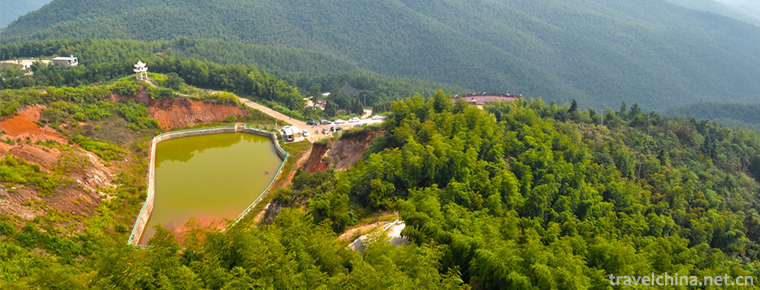
-
Henan Mayuxing Barrel Chicken
Henan Mayuxing Barrel Chicken is a famous specialty dish in Kaifeng. It is famous for its bright yellow color, salty fragrance, tender crisp, fat but not greasy.
Views: 149 Time 2018-11-25 -
The Oriental Pearl Radio & TV Tower
The Oriental Pearl Radio and Television Tower is one of the landmark cultural landscapes in Shanghai. It is located in Lujiazui, Pudong New Area, with a height of 468 meters.
Views: 608 Time 2018-12-05 -
Qibugou Scenic Area
Qibugou Scenic Area is located in Wu'an Huoshui Township, Handan City, Hebei Province. Wu'an National Geological Park and the hinterland of the National Forest Park, Hebei Province.
Views: 173 Time 2018-12-17 -
Dongshan Lake Hot Spring Resort
Dongshan Lake Hot Spring Resort is the first national AAAA-level scenic spot in Chaozhou City. It is located in the Dongshan Lake scenic spot of Shaxi Town at the junction of Chaozhou.
Views: 136 Time 2018-12-19 -
China Maritime Museum
China Navigation Museum, fully known as "Shanghai China Navigation Museum", is the first national navigational Museum approved by the State Council. It is co-constructed by the Ministry of T.
Views: 117 Time 2018-12-22 -
Kunlun Mountains
Kunlun Mountain, formerly known as Kunlunqiu, also known as Kunlunxu, is the god mountain in ancient Chinese legend, the ancestor of Wanshan Mountain, the birthplace of Chinese civilization, and the k.
Views: 137 Time 2019-01-29 -
Lingnan Impression
Lingnan Impression Park is located in the south of Guangzhou University Town (Xiaoguwei Island). It covers an area of 16.5 hectares. It is a tourist attraction that gathers sightseeing.
Views: 416 Time 2019-02-03 -
Shanghai Changfeng Ocean World
Shanghai Changfeng Ocean World belongs to the world's largest aquarium chain brand of Merlin Entertainment Group, which is the first and second largest in Europe.
Views: 222 Time 2019-03-17 -
Manchu Pearl Ball
Pearl ball is a traditional sport of Manchu, originally known as pearl picking, which originated from the ancient pearl picking production activities of Manchu. In the age of Taizu Nuerhachi in the Qi.
Views: 260 Time 2019-05-20 -
Traveling Books in Ningbo
Ningbo Walking Book, originally known as "Lotus Document" or "Plough Document", is one of the traditional local operas in Ningbo, Zhejiang Province. Sing in Ningbo dialect. Ningbo .
Views: 212 Time 2019-06-08 -
Maogus Dance of Tujia Nationality in Western Hunan
Maogus Dance of Tujia Nationality in Western Hunan Province, the traditional dance of Tujia and Miao Autonomous Prefecture in Western Hunan Province, is one of the national intangible cultural heritag.
Views: 175 Time 2019-07-06 -
Make a chant
Bamboo and hemp trumpet is a traditional folk song of Qionglai City, Sichuan Province. It belongs to a kind of labor trumpet sung by local papermaking workers when playing bamboo and hemp. It is mainl.
Views: 147 Time 2019-08-03

